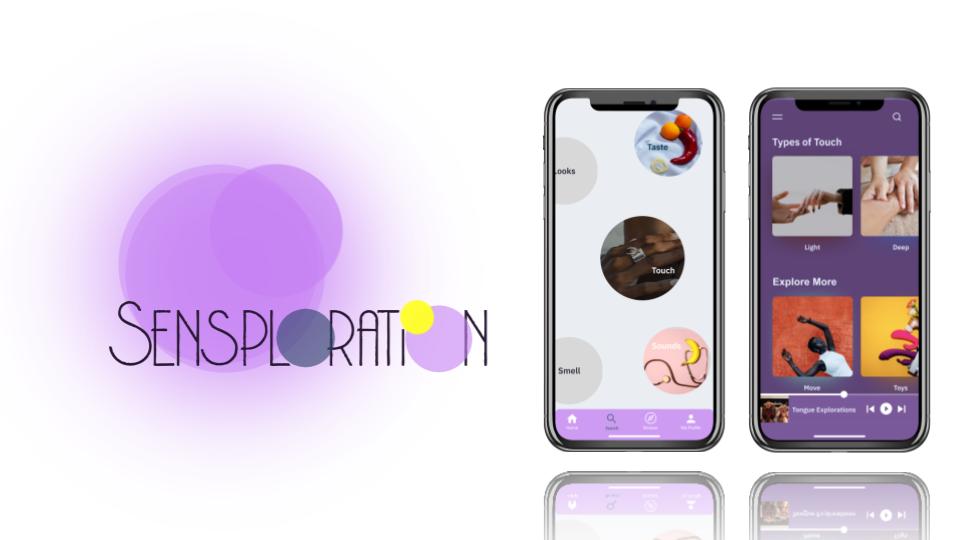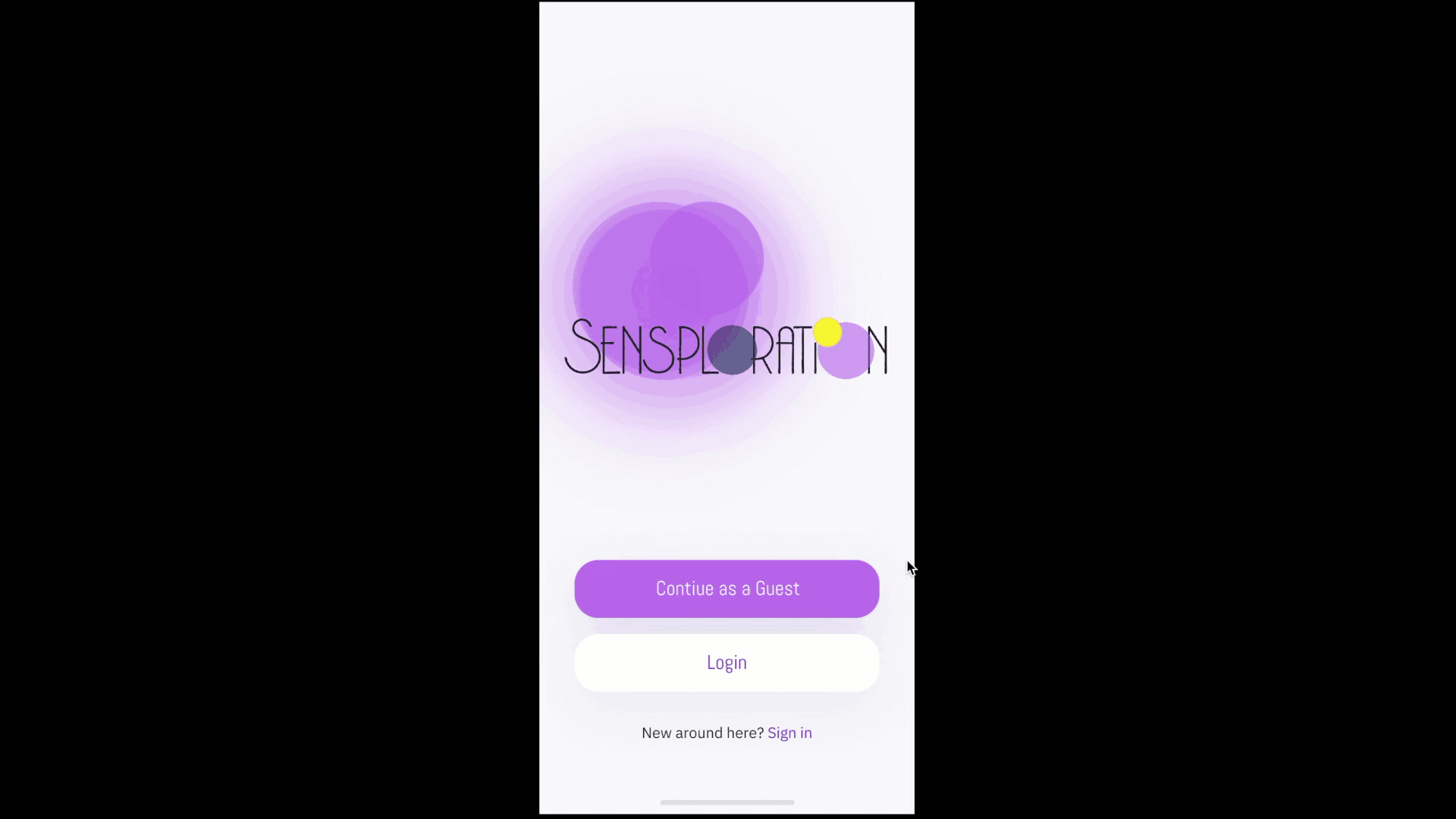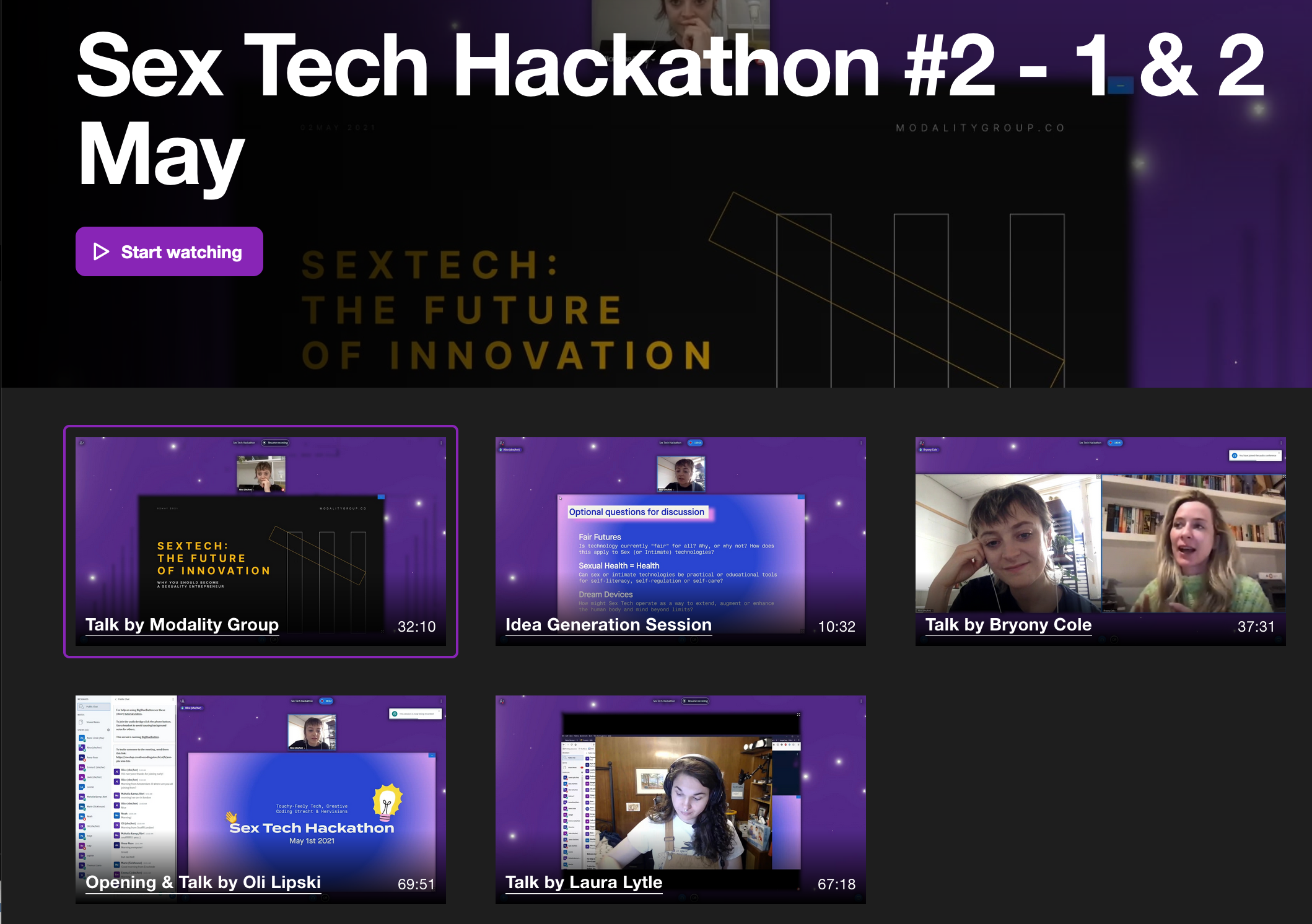Sex Tech Hackathon
How it started
One weekend morning, I was browsing Twitter and clicked into developer and writer Carolyn Stransky’s posts on sex and tech. She posted about the Sex Tech Hackathon co-hosted by Touchy Feely Tech, Hervisions, Kinky Makers, Creative Code Utrecht that was part of the Rainbows End online festival.
In the event’s words:
We invite artists, academics, activists, thinkers and tinkerers from all backgrounds and perspectives to take part. The Hackathon is open to anyone interested in exploring the themes of the event with a group of like-minded people. The Hackathon is also beginner-friendly, so if you have always wanted to participate in an event that follows this unique format, now is your chance!
In case you prefer not to have the full Hackathon experience but still want to join the conversation, we’ve also planned a workshop and a talk show that can be attended without a Hackathon ticket. Read on to discover our full agenda!
It just seemed like a great collection of community people. I had no idea what the event was about and no idea what to expect, but I figured it was worth €40 to find out (also the only hackathon I’ve ever paid for). I also enlisted a co-conspirator Ghonche Tavoosi, who actually looked into the details and was even more excited than me. Last year, we built a working prototype of audio hugs for the LGBTQ community, Pride Polyphony for the Unicorns in Tech Pride Hackathon together with fellow team member Emma Lawson, who came up with the idea. This year, our friend Thomas Lianowho gave us the product inspiration.
For this hackathon, the design challenges were:
| FAIR FUTURES | SEXUAL HEALTH = HEALTH | DREAM DEVICES |
|---|---|---|
| As the Sex Tech industry grows, how can we make sure its offerings are accessible to and representative of the wide spectrum of different bodies, identities, imaginations, backgrounds, cultures and contexts that exist here on Earth? How might we develop and distribute tools, experiences or education that actively serve the underserved, and help to destigmatize, decolonize or depatriarchalize the tech industry? This track is focused on the importance of user-centered design in the development of Sex Tech. | Recent studies have shown us that sexual health is a reliable barometer for overall health (did you know that someone tracked their recovery from a brain injury with their smart vibrator?). Focusing on pleasure and intimacy is a powerful way to improve our understanding of the complex link between our body and mind. Can sex or intimate technologies be practical or educational tools for self-literacy, self-regulation or self-care? This track is focused on the meaningful purpose of Sex Tech and its therapeutic potential. | As technology becomes smarter, more powerful and increasingly closer to our bodies, how (or when) might Sex Tech become a way to extend, augment or enhance the human body and mind beyond limits? How might Sex Tech play a part in breaking convention around what it is to be human, what it is to be sexual, what it is to be “present”, and address the historic and cultural shifts that face us on the horizon? This track seeks to speculate on the evolution of Sex Tech into the not-so-distant future. |
Our Project
Ghonche had enlisted Thomas Liano, who had the idea to create an app to help people expand how they experience their body, or more specific, bodily pleasure.
The Problem
The idea was that many people may not feel entirely connected to their body or the permission to feel bodily pleasure. We wanted envision an app that is radically inclusive in how people are invited to explore experiences, sensuality, and potentially sexuality.
To summarize, we had two hypotheses:
- A lot of people can probably not only have better sex, but have access to more ways of feeling pleasure through their body (sexual or not).
- Mindfulness (and connection to the body) is a huge industry; the experience industry is huge; the sex industry is huge. There’s a market for this type of content, whichever industry it sits in, but ideally at the intersection of the three.
The Solution
 Our solution came in two parts.
Our solution came in two parts.
- To collect data on our idea that people wanted to have better sex or find more ways to experience physical pleasure, we did a survey and received 70 responses in under 24 hours. (Findings are in the project page.)
- We built a mobile app mockup of our concept using Figma.
The App
If you want details on the app, go to this project post.
Though there are a number of ways to address the problem we wanted to solve, we chose to do it through a mobile application. Even then, there are a number of ways to create a solution. We decided to create an activity-based app that offers people new approaches to explore and enjoy their body using the 5 senses and the intersections between them.
The goal of the app is to give people a framework through each of the senses to explore their and their partners’ bodies. In the long run, the user’s knowledge of what they enjoy is expanded, and they have the tools needed to openly communicate what they enjoy to others. This approach remaps how we think about pleasure and intimacy, dismantling stigmas, shame, and taboos.
We also wanted to create an app that was:
- inclusive of all gender identities
- be mindful of how people may or may not relate to different parts of their bodies (for example, trans and genderqueer folks)
- get away from gendered descriptions or roles (not heteronormative)
- not limit concepts as sexual acts (for ACE folks)
- be inclusive of bodies with different abilities
- be inclusive of different types of bodies, shapes, and skin colours
- be accessible to people who may have difficulty reading (therefore the content would have both transcript and audio)

I describe the app development in more detail in my projects page. We presented this on Sunday and are honoured to have tied for 2nd place.
Other notes and observations

This was the most informative hackathon I have ever attended. Other hackathons that have informational sessions tend to center around product ideation, business, and pitching. These sessions included DIY workshops and information on the industry in general. You should look up content that the speakers below have on the web:
- Oli Lipski, Sex Tech blogger Idea generation session with Alice Stewart, founder of Touchy Feely Tech
- Bryony Cole, podcaster and founder of Sextech School
- Laura Lytle, Activist, Feminist and Maker
- Lex Gillion from Modality Group
- Teardown workshop by the KinkyMakers
The event also gathered people from very different backgrounds including developers, makers and artists. Many of the teams gravitated towards gender neutral products that focused much more on experiences and sensations, which was heartening to see. There were proposals for haptic napkin-sized products, pens that could draw as well as have motors, blending of audio and motion experiences. The first place team took inspiration from ET fingers and looked at augmentations for fingering.
I also didn’t realize that there would be raffles, but there were. Money was definitely well spent for the weekend.
You can also read more about the product and protocyping process here.